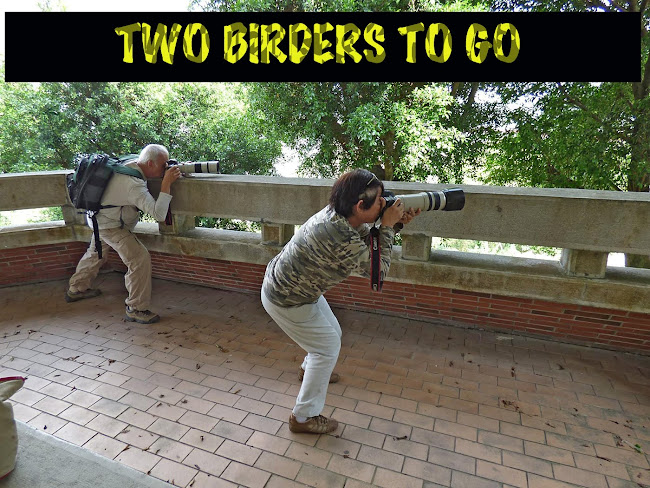My wife and I arrived early - about 6:30 - and started driving along the street where the nests were. Magsaysay St. is not long, probably not more than 10 blocks from end to end. And for the life of me, Cynthia and I could not locate the nests of the White-breasted Woodswallows and Crested Mynas. A frantic text to Maia. We get an immediate reply saying the nests were just across the Alumni Center. We found the building quite easily (it's not like we haven't been here before) and at once we saw the Woodswallows. I parked the car, took out my equipment and as soon as I had it ready, the Woodswallows flew away. My Kainis Poreber character was starting to surface when Cynthia pointed to the wooden electric pole to our right. "Crested Myna!" she exclaimed.
The adult birds were flying back and forth bringing food to what we assumed to be several chicks inside the top of the pole. Cynthia, meantime, joined her friends whom we met earlier at the Chocolate Kiss cafe at the next building for some girl talk. I on the other hand, stood, waited, photographed, then waited again for the Crested Mynas.
A text message. It was from Adri apologizing for not replying earlier (I asked him for the nest location the night before). He also said that the Woodswallow chicks were now fully fledged and therefore no longer stays at the nest area. But the Mynas are still there he assured me. I thanked him and told him that I saw the Mynas already.
Another text message. It was Bong this time. He wanted to know where the nests are. I gave him the directions. After exchanging several more texts, he asked where I was. Standing at the sidewalk I told him. Apparently he already drove by a couple of times and still did not see me. My camouflage must be very effective. And I'm not even wearing one. Frustrated, he texted Cynthia instead. She promised to meet him in front of the cafe. A minute later both of them were parking next to my car.
Not long after Bong arrived, we were joined by Eve, his better half. For the next couple of hours, Bong and I watched and photographed the diligent parenting duties of the Crested Mynas while our wives engaged in some heavy conversation.
 |
| First the entree |
 |
| then comes the dessert |
 |
| and clean up afterwards |
By now the weather was getting hotter by the minute. There weren't anything new happening around us bird-wise so we decided to call it day.
Brunch at the Cafe Via Mare was good. Somehow food tastes even better when shared with good friends.















